Alexander Calder: The Inventor of Moving Sculpture
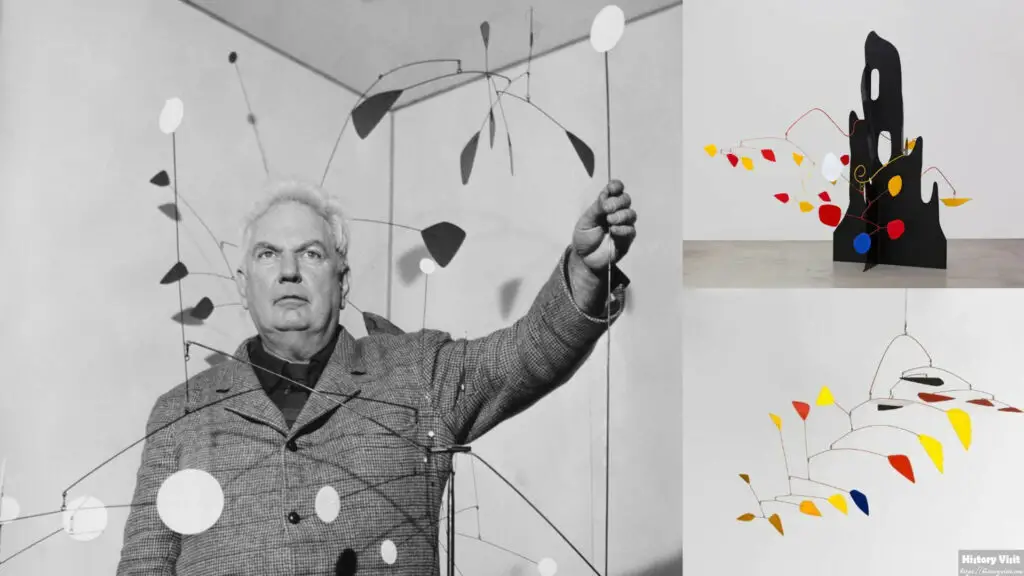
Introduction
Alexander Calder reshaped modern sculpture with motion and color. He invented kinetic art with his mobiles. Born in 1898, Calder grew in a family of artists. His grandfather and father were sculptors.
Alexander Calder studied engineering before turning to art. That mix shaped his unique vision. He used mechanics, balance, and play in his work. Alexander Calder made art move, spin, and float.
This article explores his life and works. It covers his mobile sculptures, stabiles, and legacy. Each part shows how Alexander Calder changed the art world.
Early Life and Education of Alexander Calder
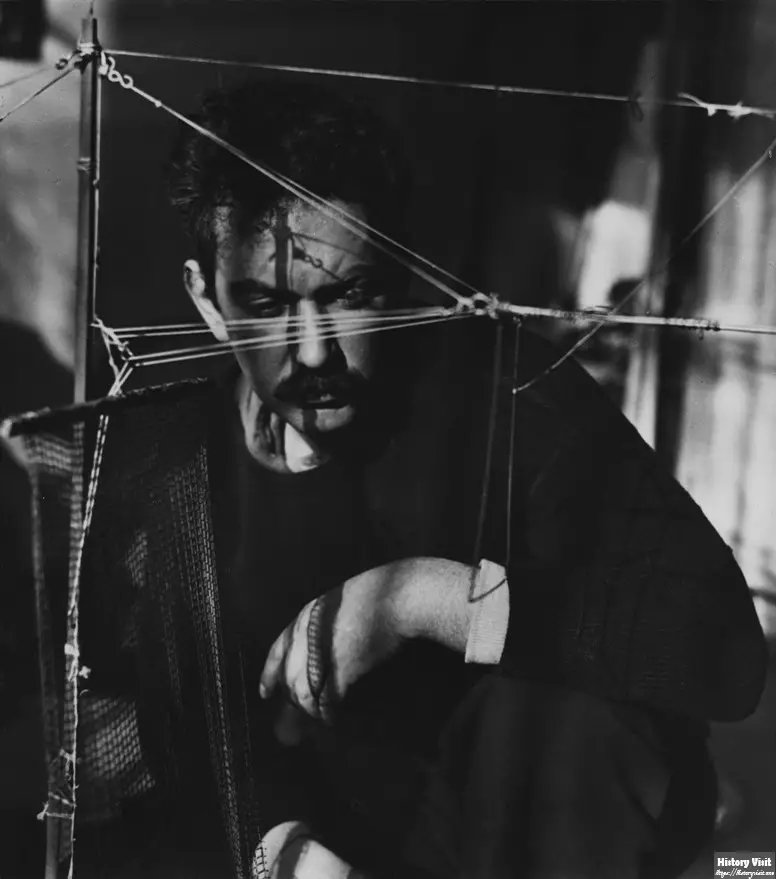
Alexander Calder was born in Pennsylvania in 1898. His home was full of art tools. His parents encouraged creativity.
He studied mechanical engineering in college. After graduating, he worked in various jobs. But he wanted to create, not build machines.
He later studied art in New York and Paris. Alexander Calder absorbed new ideas. He admired Picasso and Mondrian.
This mix of training helped shape his path. He would bring movement into sculpture. It was a fresh idea.
Alexander Calder and the Birth of Mobiles
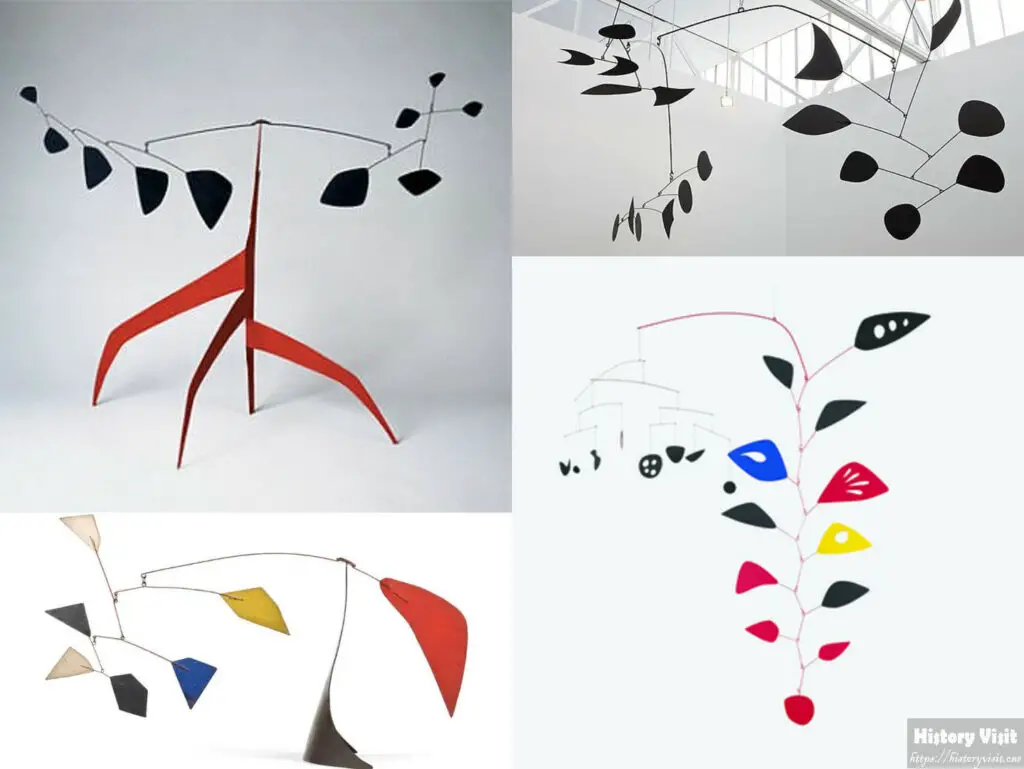
In the 1930s, Alexander Calder created his first mobiles. These were sculptures that moved.
He used wires, rods, and flat shapes. He balanced them with care. Even a soft breeze made them dance.
French artist Marcel Duchamp named them “mobiles.” The term meant motion. Calder’s works floated in air like poetry.
This was revolutionary. Sculpture had always been solid and still. Alexander Calder changed that rule.
Design and Technique in Alexander Calder’s Mobiles
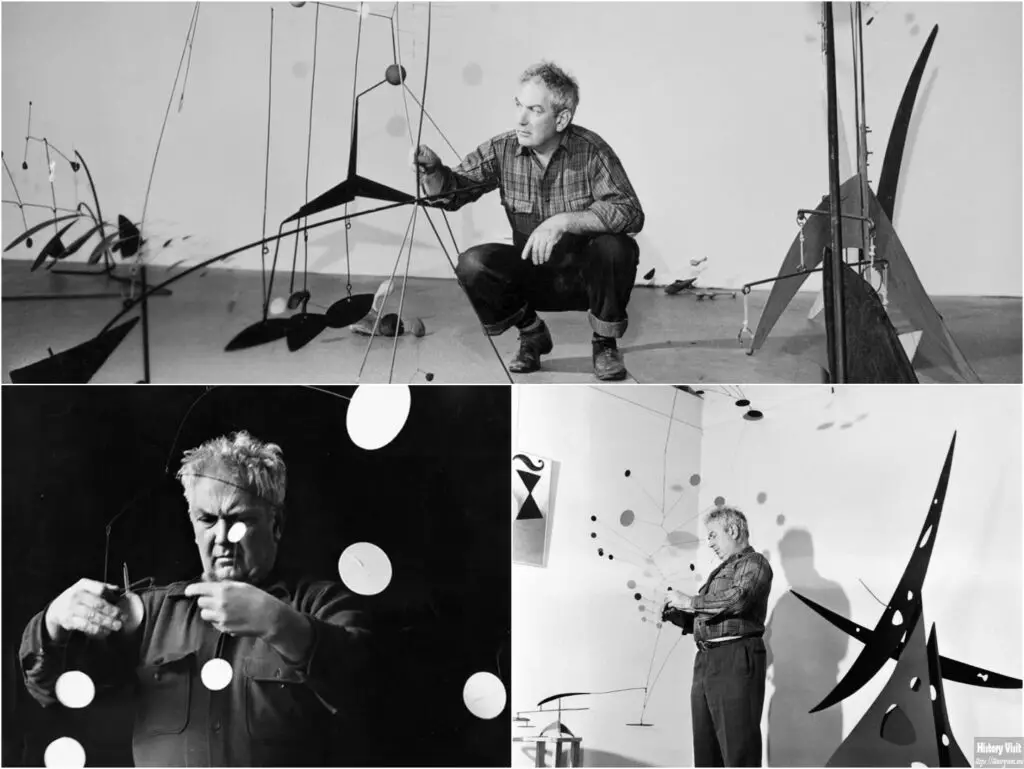
Calder’s mobiles were not random. Each piece was planned. Every angle served a purpose.
He worked with balance and space. Shapes hung from rods, moving in patterns. They looked playful but were precise.
The materials were simple: aluminum, steel, and wire. But the effect was magical. Movement became part of the art.
Color played a role too. Alexander Calder used bold reds, blues, and blacks. His style was clean and bright.
Stabiles: The Still Works of Alexander Calder
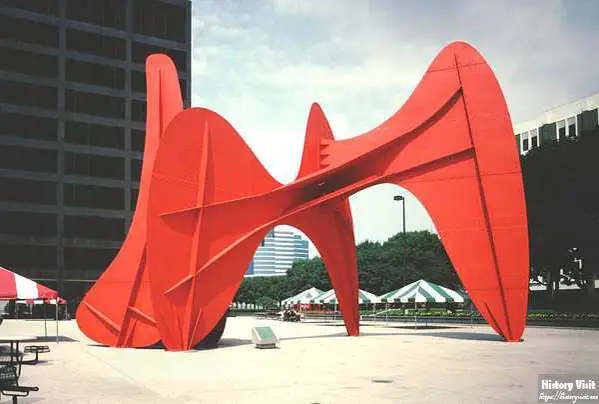
Not all Calder’s art moved. He also made large, fixed sculptures. These were called stabiles.
They were solid and strong. Many were placed outdoors. Their shapes reached upward like monuments.
Even though they did not move, they felt alive. Curves and angles gave them energy. They seemed to shift as you walked around them.
Alexander Calder made stabiles for cities and parks. They became landmarks. People interacted with them daily.
Public Art and Large-Scale Commissions
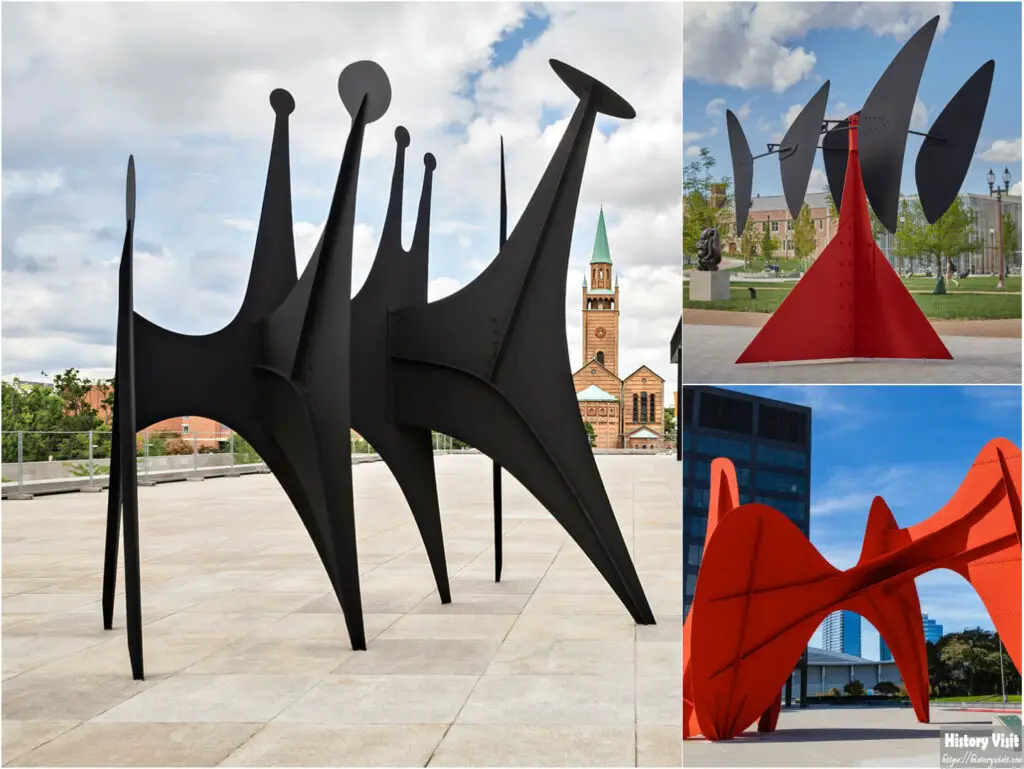
In the 1950s and 60s, Calder worked on big projects. He built art for public spaces.
He made sculptures for government buildings, airports, and plazas. His works brought joy to urban areas.
One famous piece is “Flamingo” in Chicago. It stands tall in bright red. It changed the look of the plaza.
Alexander Calder believed art should be part of life. His public sculptures proved that vision.
Alexander Calder and Painting
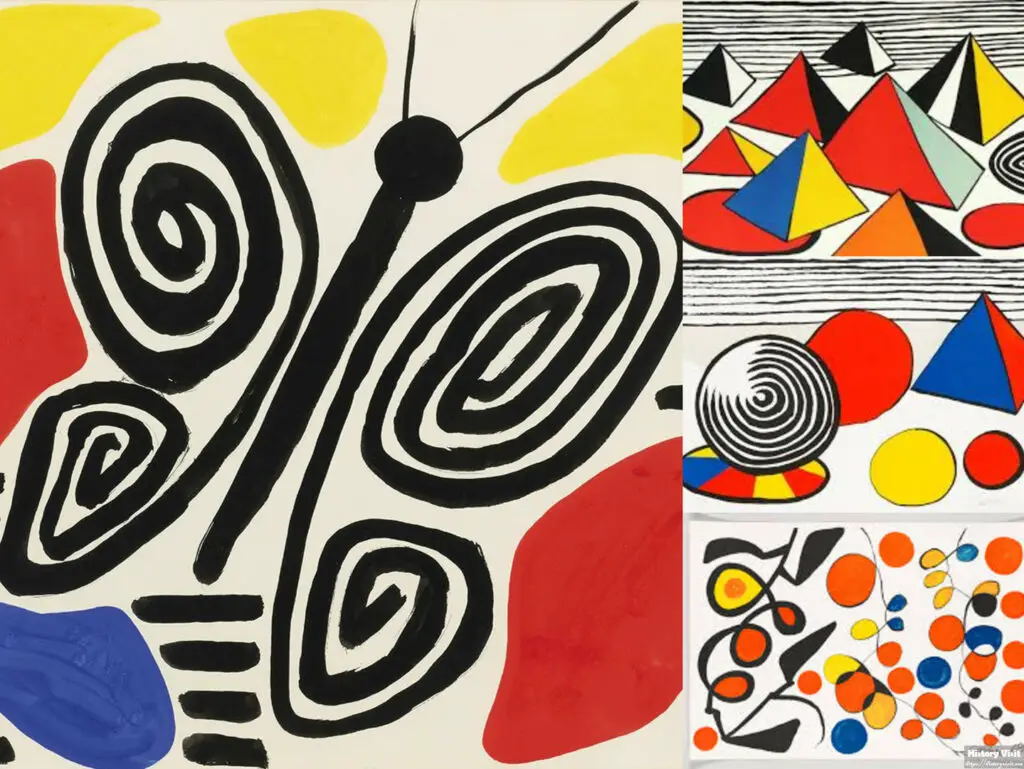
Calder also explored painting. He created gouaches, lithographs, and designs.
His paintings echoed his sculptures. He used simple lines and vivid colors. The style was lively and direct.
He made stage sets and costumes too. Theatrical design excited him. His art reached many forms.
Alexander Calder saw no barrier between art types. He merged sculpture, painting, and performance.
Influence of Science and Motion
Calder’s love for science shaped his work. His mobiles reflected physical laws.
He thought like an engineer and felt like a poet. Balance, gravity, and motion were his tools.
His mobiles taught people to look up. They showed art could move and breathe.
Alexander Calder made invisible forces visible. That gave his art a unique spirit.
International Recognition and Exhibitions
By the 1940s, Calder had global fame. Museums collected his work. Galleries held exhibitions.
He was shown in Paris, New York, and beyond. Audiences loved his light-hearted style.
He was part of major art movements. Abstract art found a friend in Calder.
Alexander Calder stood apart but also inspired others. His impact was worldwide.
Legacy and Lasting Impact
Alexander Calder died in 1976. But his work lives on. Museums display his mobiles and stabiles proudly.
He inspired generations of artists. His ideas opened new doors.
Public art owes much to him. He made sculpture interactive and joyful.
Alexander Calder gave the world motion in art. That motion still speaks today.
Collections and Major Museums
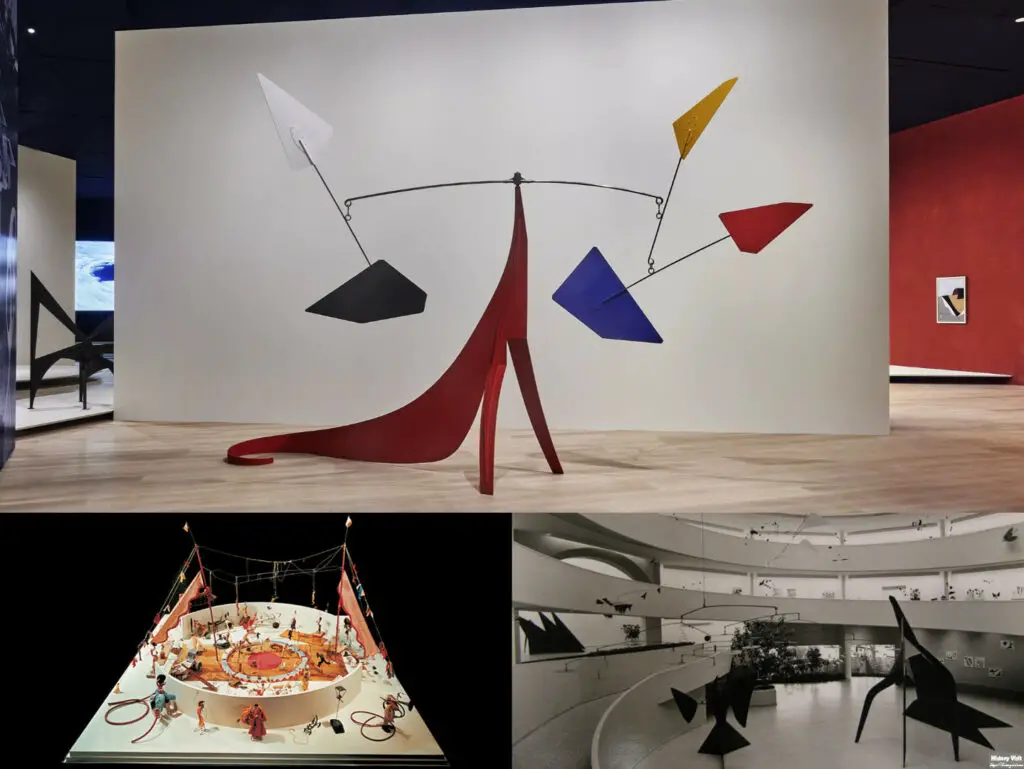
Calder’s works are held in top museums. The Museum of Modern Art owns many pieces.
The Whitney Museum and Guggenheim display his mobiles. International museums do too.
His art fills sculpture gardens and public parks. People of all ages admire them.
Alexander Calder’s reach is vast. His presence remains strong.
Symbolism and Themes in Calder’s Art
Calder’s themes were abstract. He avoided clear messages. But his art expressed joy.
The use of space mattered. Each sculpture invited movement and change. Viewers shaped the experience.
He favored universal forms. Shapes and colors spoke across cultures. Art became a shared language.
Alexander Calder valued beauty and surprise. That spirit filled every piece.
Alexander Calder and the Art World Today

Artists still learn from Calder. His mobiles influence new creators. Kinetic art owes its roots to him.
Exhibitions still celebrate his vision. Scholars study his designs. Children and adults enjoy his works alike.
His methods shaped modern art education. He blended science with expression.
Alexander Calder is not forgotten. He stays relevant.
Calder Foundation and Preservation
The Calder Foundation protects his legacy. It archives his works and supports research.
They lend pieces to exhibitions. They help preserve mobiles and stabiles.
Education is key to their mission. They bring Calder’s work to new generations.
Through the foundation, Alexander Calder’s voice continues.
Conclusion
Alexander Calder transformed sculpture. He brought motion and fun into a still tradition. He redefined what sculpture could be.
His mobiles and stabiles changed public art. His works made cities more playful and alive.
Today, Alexander Calder remains a giant. His art floats, turns, and inspires. His legacy moves with time.


